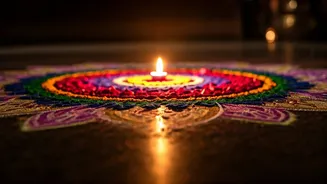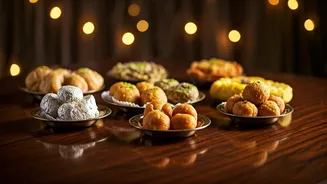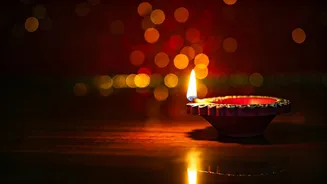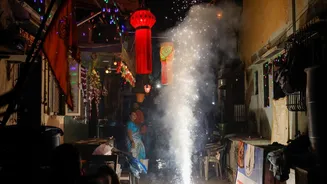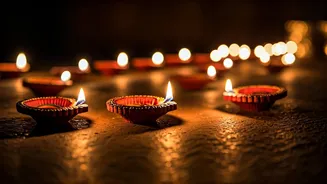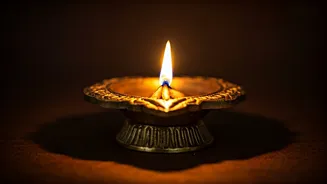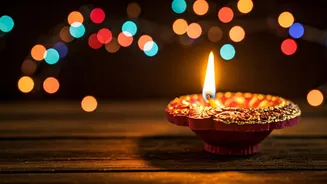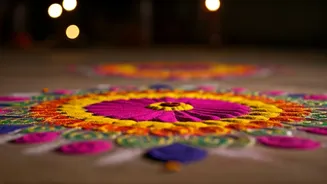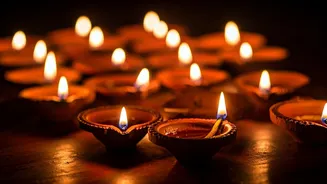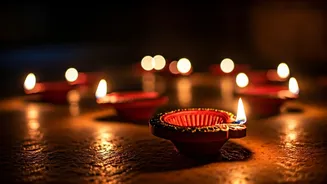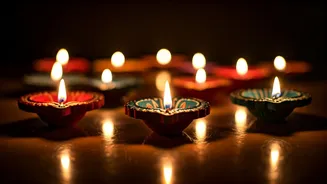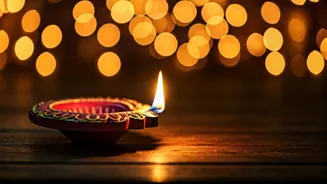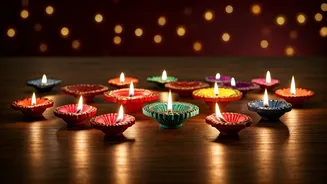Diwali: A Spiritual Overview
Diwali, the Festival of Lights, is celebrated with immense joy and fervor across India and the diaspora. The festival signifies the victory of light over
darkness, good over evil, and knowledge over ignorance. Diwali is observed over five days, each with its own unique customs and rituals. It's a time for family reunions, the exchange of gifts, and the creation of beautiful Rangoli designs. The core essence lies in the lighting of diyas (oil lamps) and the bursting of fireworks, symbolizing the dispelling of darkness and welcoming prosperity. This festival is deeply rooted in the Hindu epic Ramayana, celebrating Lord Rama's return to Ayodhya after fourteen years of exile and his victory over the demon Ravana. Diwali provides a perfect opportunity for spiritual reflection, family bonding, and spreading happiness.
Puja Timings and Muhurat
Understanding the auspicious timings, or Muhurat, for performing the Lakshmi Puja is crucial during Diwali. These timings are considered especially favorable for invoking the blessings of Goddess Lakshmi, the deity of wealth and prosperity. In 2025, the specific timings will be determined based on the lunar calendar, and it is important to consult a reliable source such as a Pandit or a trusted online platform to get the accurate Shubh Muhurat. During the Lakshmi Puja, devotees offer prayers, perform rituals, and seek blessings for a year of prosperity and well-being. The puja usually involves reciting mantras, offering flowers, and lighting diyas. It's a time to invite Goddess Lakshmi into your homes and lives, ensuring good fortune and success. Observing the correct timings adds spiritual significance to the festivities.
Lakshmi Puja: Rituals Unveiled
The Lakshmi Puja is the central ritual of Diwali, dedicated to the goddess of wealth, prosperity, and abundance. The puja involves a series of carefully performed steps, each carrying symbolic meaning. First, devotees prepare the Puja altar by cleaning and decorating it with flowers, diyas, and colorful decorations. A picture or idol of Goddess Lakshmi is placed prominently on the altar. The Puja starts with the invocation of Lord Ganesha, seeking his blessings for the successful completion of the Puja. Then, the Lakshmi Puja is performed, including offering flowers, incense, sweets, and lighting diyas. During the Puja, devotees chant mantras dedicated to Goddess Lakshmi, seeking her blessings for financial well-being and overall prosperity. Finally, the Puja concludes with an Aarti, and the distribution of prasad (blessed food).
Creating Rangoli Designs
Rangoli designs are a vibrant and essential part of Diwali celebrations, enhancing the beauty and festive spirit of homes and surroundings. These colorful patterns are created on the floors using colored powders, flower petals, rice flour, and other materials. The designs often feature intricate patterns, geometric shapes, and depictions of deities. Creating Rangoli is seen as a way of welcoming the Gods and Goddesses, and Rangoli is traditionally drawn at the entrance of homes to welcome prosperity and good fortune. The process of creating Rangoli is also a creative expression for families, as they come together to make vibrant designs. As Diwali 2025 approaches, keep an eye out for inspiration from traditional patterns and modern designs to add a unique touch to your celebrations.
Sharing Diwali Wishes
Diwali is a time for spreading joy, love, and good wishes. Exchanging warm messages and greetings with family and friends adds a personal touch to the celebrations. These wishes can be shared through traditional greeting cards, digital platforms, or simply through heartfelt conversations. Wishes often include messages of prosperity, happiness, and good health for the year ahead. They provide a means to connect with loved ones, both near and far, sharing the joy and warmth of the festival. In 2025, a plethora of thoughtfully created Diwali greetings, messages, and quotes will be available online and offline, enabling everyone to convey their heartfelt sentiments to their friends and family. A sincere wish can brighten the day of the receiver and strengthen the bonds of the relationship.
Cultural Significance Explained
Diwali's significance is far-reaching and deeply rooted in Indian culture and spirituality. It symbolizes the victory of good over evil, light over darkness, and the triumph of knowledge. The festival is a celebration of the return of Lord Rama to Ayodhya after his exile and victory over the demon Ravana, marking the beginning of a new era of righteousness. Besides this, Diwali is associated with other important mythological events, making it a festival of various regional traditions and celebrations. The cultural significance is highlighted through the stories and the practices related to the celebration, which vary across different regions of India. It represents a shared heritage, bringing communities together to celebrate and reflect on their values and beliefs.
Other Diwali Traditions
Apart from the central Puja and exchange of wishes, Diwali is observed through many other traditions and rituals that enrich the celebration. Lighting diyas and decorating homes with lights symbolizes the welcoming of light and prosperity. Bursting firecrackers is another popular custom, though it is increasingly being viewed with environmental and health concerns. Families often come together to prepare and share delicious food and sweets, which are an integral part of Diwali festivities. Exchanging gifts, especially sweets and dry fruits, is another common practice, enhancing the sense of togetherness. These traditions create a festive ambiance, making Diwali a truly memorable experience. These traditions have been passed down through generations, making Diwali a vibrant and meaningful festival.
